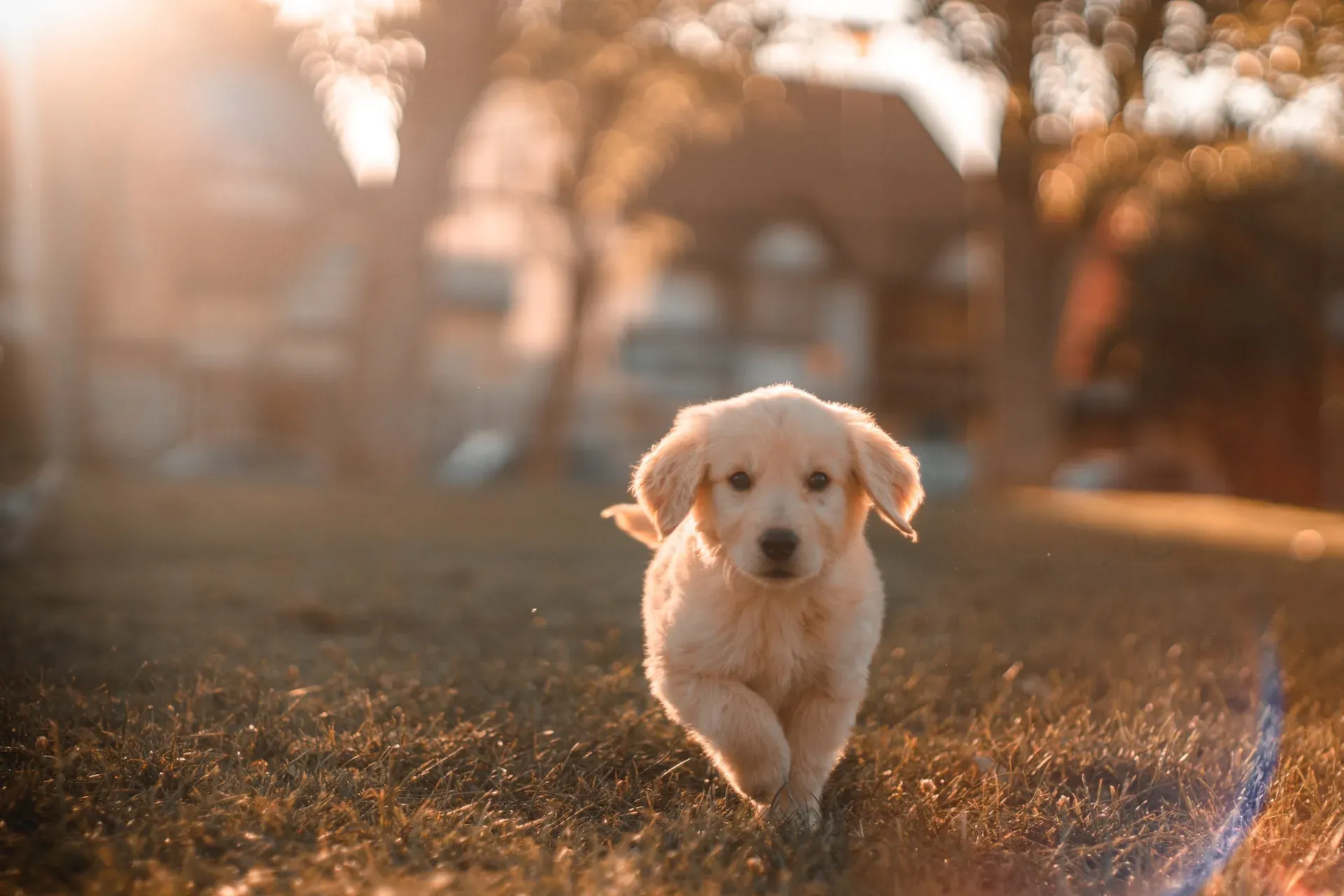Published: October 03, 2023
Last Updated: March 20, 2025
Establish a routine
The cornerstone of successful toilet training includes establishing a consistent routine for your puppy. Puppies thrive on predictability, and a structured routine helps them learn when and where to relieve themselves. Here's how you can create a routine:
Feeding schedule:
Feed your puppy at the same times every day. This will help you predict when they'll need to go to the toilet since puppies usually need to relieve themselves shortly after eating.
Regular toilet breaks:
Take your puppy outside for breaks at regular intervals. Start with every 1-2 hours and gradually extend the time between breaks as your puppy matures.
After playtime and naps:
Puppies often need to go to the toilet after playtime or waking up from a nap. Be attentive to these signs.
Choose a designated area
Selecting a specific spot in your garden for your puppy to use as their bathroom is crucial. This area should be easily accessible and consistently used. Puppies are creatures of habit, so taking them to the same spot each time helps reinforce the idea that this is where they should do their business.
Use positive reinforcement
Positive reinforcement is a powerful tool in toilet training. Whenever your puppy goes in the designated area, praise them enthusiastically and offer a small treat as a reward. Positive reinforcement helps your puppy associate the act of going to the toilet in the right place with positive outcomes.
Watch for signs
Pay close attention to your puppy's behaviour. They may exhibit specific signs when they need to go, such as sniffing, circling, or whining. When you notice these signs, take your puppy outside immediately to their designated area.
Supervision and crating
Until your puppy is fully toilet trained, it's essential to supervise them closely indoors. If you can't keep an eye on your puppy at all times, consider using a crate. Dogs are naturally averse to soiling their sleeping area, so a crate can help prevent accidents. Ensure the crate is appropriately sized, allowing your puppy to stand, turn around, and lie down comfortably.
Clean accidents thoroughly
Inevitably, accidents will happen during the training process. When they do, it's essential to clean up the mess promptly and thoroughly. Use an enzymatic cleaner to eliminate any lingering odours that might attract your puppy back to the same spot.
Patience and consistency
Toilet training can be frustrating at times, but it's crucial to remain patient and consistent throughout the process. Avoid scolding or punishing your puppy for accidents; this can lead to fear and anxiety. Instead, focus on reinforcing positive behaviour.
Advanced training tips
As your puppy progresses in their toilet training, you can take additional steps to ensure long-term success.
Transition to longer intervals:
Gradually increase the time between breaks as your puppy gains better bladder control. However, continue to maintain a consistent feeding schedule.
Teach command words:
Consider teaching your puppy specific command words like "potty" or "go outside." This can be helpful when you want them to relieve themselves on cue.
Be mindful of water intake:
Limit your puppy's water intake in the evening to reduce nighttime accidents and remember to provide plenty of water during the day to keep them hydrated.
Monitor their diet:
Pay attention to your puppy's diet. Some foods may lead to more frequent bathroom breaks. Consult your veterinarian for guidance on the best food choices.
Gradual freedom:
As your puppy demonstrates consistent toilet habits, gradually grant them more freedom indoors. Start with a small, puppy-proofed area and expand it as they become more reliable.
Celebrate milestones:
Celebrate your puppy's achievements in toilet training. When they consistently use their designated potty area, it's a significant milestone worth acknowledging.
Take your time – it’s worth it!
Toilet training a puppy may require time and effort, but the rewards are well worth it. By establishing a routine, using positive reinforcement, and being patient and consistent, you can help your puppy develop the good habits they need to become a well-behaved and house-trained adult dog.
Remember that every puppy is unique, and the training process may vary in duration. With love, patience, and a bit of guidance, you can successfully toilet-train your new furry friend and enjoy a clean and harmonious home together.
Was this article helpful?
